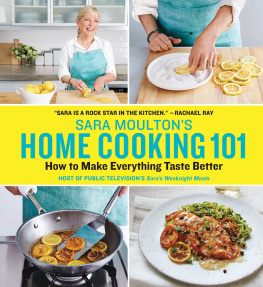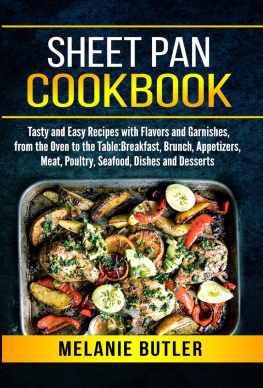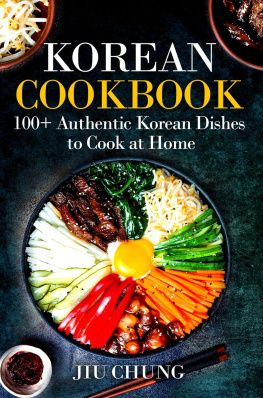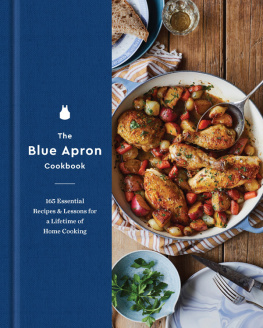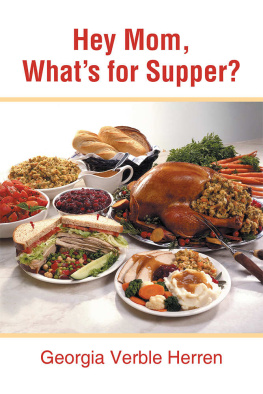Contents

SEASONAL PRODUCE GUIDE
When you use fresh fruits, vegetables, and herbs, you dont have to do much to make them taste great. Although many fruits, vegetables, and herbs are available year-round, youll get better flavor and prices when you buy whats in season. This guide helps you choose the best produce so you can create tasty meals all year long.
SPRING
Fruits
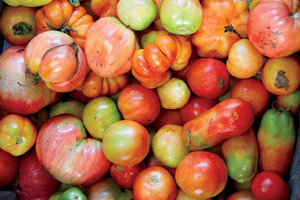
Bananas
Blood oranges
Coconuts
Grapefruit
Kiwifruit
Lemons
Limes
Mangoes
Navel oranges
Papayas
Passion fruit
Pineapples
Strawberries
Tangerines
Valencia oranges
Vegetables
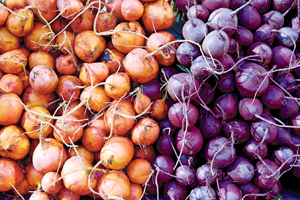
Artichokes
Arugula
Asparagus
Avocados
Baby leeks
Beets
Belgian endive
Broccoli
Cauliflower
Dandelion greens
Fava beans
Green onions
Green peas
Kale
Lettuce
Mushrooms
Radishes
Red potatoes
Rhubarb
Snap beans
Snow peas
Spinach
Sugar snap peas
Sweet onions
Swiss chard
Herbs
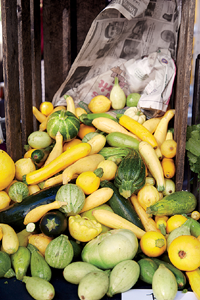
Chives
Dill
Garlic chives
Lemongrass
Mint
Parsley
Thyme
SUMMER
Fruits
Apricots
Blackberries
Blueberries
Boysenberries
Cantaloupes
Casaba melons
Cherries
Crenshaw melons
Figs
Grapes
Guava
Honeydew melons
Mangoes
Nectarines
Papayas
Peaches
Plums
Raspberries
Strawberries
Watermelons
Vegetables
Avocados
Beans: pole, shell, and snap
Beets
Bell peppers
Cabbage
Carrots
Celery
Chile peppers
Collards
Corn
Cucumbers
Eggplant
Green beans
Jicama
Lima beans
Okra
Pattypan squash
Peas
Radicchio
Radishes
Summer squash
Tomatoes
Herbs
Basil
Bay leaves
Borage
Chives
Cilantro
Dill
Lavender
Lemon balm
Marjoram
Mint
Oregano
Rosemary
Sage
Summer savory
Tarragon
Thyme
FALL
Fruits
Apples
Cranberries
Figs
Grapes
Pears
Persimmons
Pomegranates
Quinces
Vegetables
Belgian endive
Bell peppers
Broccoli
Brussels sprouts
Cabbage
Cauliflower
Eggplant
Escarole
Fennel
Frise
Leeks
Mushrooms
Parsnips
Pumpkins
Red potatoes
Rutabagas
Shallots
Sweet potatoes
Winter squash
Yukon gold
potatoes
Herbs
Basil
Bay leaves
Parsley
Rosemary
Sage
Tarragon
Thyme
WINTER
Fruits
Apples
Blood oranges
Cranberries
Grapefruit
Kiwifruit
Kumquats
Lemons
Limes
Mandarin oranges
Navel oranges
Pears
Persimmons
Pomegranates
Pomelos
Tangelos
Tangerines
Quinces
Vegetables
Baby turnips
Beets
Belgian endive
Brussels sprouts
Celery root
Escarole
Fennel
Frise
Jerusalem artichokes
Kale
Leeks
Mushrooms
Parsnips
Potatoes
Rutabagas
Sweet potatoes
Turnips
Watercress
Winter squash
1 the 10 basics of great home COOKING
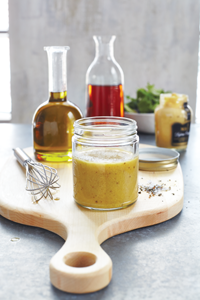
I believe that most folks would love to put a home-cooked meal on the table every night. I also understand that a sizable number of those folks figure that doing so is an impossible dream. They tell themselves that they lack the time, the money, and the know-how.
This book is dedicated to the proposition that none of those hurdles is too high to jump. In fact, chances are theyre higher in your imagination than in reality: Making dinner takes less time than you think, it costs less than you think (indeed, its cheaper than fast food), and its easier than you think.
As a professional chef, teacher, and home cook, Ive spent the last 40 years refining my thinking on these very subjects. In truth, it happens naturally. Anyone who does somethingor anythingover and over again finds that the shortcuts begin to make themselves pretty obvious after awhile. (People always ask me, How do I learn to cook? My standard answer is, Just cook.)
The list that followsthe basics of great home cookingcrystallizes my lifetime of experience in the kitchen. I pass it on as an end in itselfgood cooking is its own rewardand as a means to an end: Cooking leads to dining, and dining together strengthens the bonds of family and friends.
1. SHAKE HANDS WITH YOUR STOVE.
Shake hands with your racket is what they used to tell me as a kid taking tennis lessons. (Although I never really excelled at the sportI was always too distracted by the thought of what was for lunch.) Essentially, what they were saying was feel comfortable with this tool first before you start playing. I think the basic advice is sound enough to be transferrable. The equivalent for our purposes is Shake hands with your stove.
You may be shocked to learn that I work with an electric stove and oven. Most chefs prefer gas stovetops. Id probably choose gas myself if the New York City building where we live was zoned for it, but Ive been stuck with electric for years, and not just in the city, but at my parents farmhouse in the country, too. These days I dont mind cooking on an electric stove because Ive become familiar with it. I know to move the pan from a high burner to a low burner when I need to reduce the heat quickly. I know on exactly which oven rack I should place that pan when I want to put some color on my food. You should do the same. Whether you cook with gas or electric, get to know your stove.
2. BUY A GOOD KNIFE.
A good knife is an investment for life; if you spend real money on only one piece of kitchen equipment, let it be for that knife. And it should be a 10-inch chefs knife. Seems like a mismatch, you say? Whats a woman so small doing with a knife so large? Making it easy for herself.
Let me explain. When youre chopping, the knife should do all the work, not you. Youre there to guide the knife, not muscle it. The weight of a chefs knife is greatest at the point where the blade meets the handle. (This is called the bolster.) I refer to the part of the blade that starts at the bolster and extends for several inches toward the tip of the knife as the guillotine. Its the section of the knife under which you should position your victim, whether its an onion, a carrot, or a bunch of herbs.
On an 8-inch knife, the guillotine is only about 2 inches long. On a 10-inch knife its more like 4 inches long. The longer knifes additional real estate allows you to do twice the amount of work in the same amount of time and using the same amount of energy youd expend with the smaller knife. I rest my case.
Its also crucial to keep the blade sharp. Do so by using a whetstone. A whetstone puts an edge back on a knife that has become dull. Its affordable and effective. Just be sure to read the instructions regarding the correct angle at which to hold the knife when you pull it across the whetstone. (It differs depending on where the knife was manufactured.) Or you can use an electric sharpener. As long as you dont overdo it and grind down the blade until it resembles a boning knife, an electric sharpener will do a fine job. (Chefs Choice makes a good one.)

